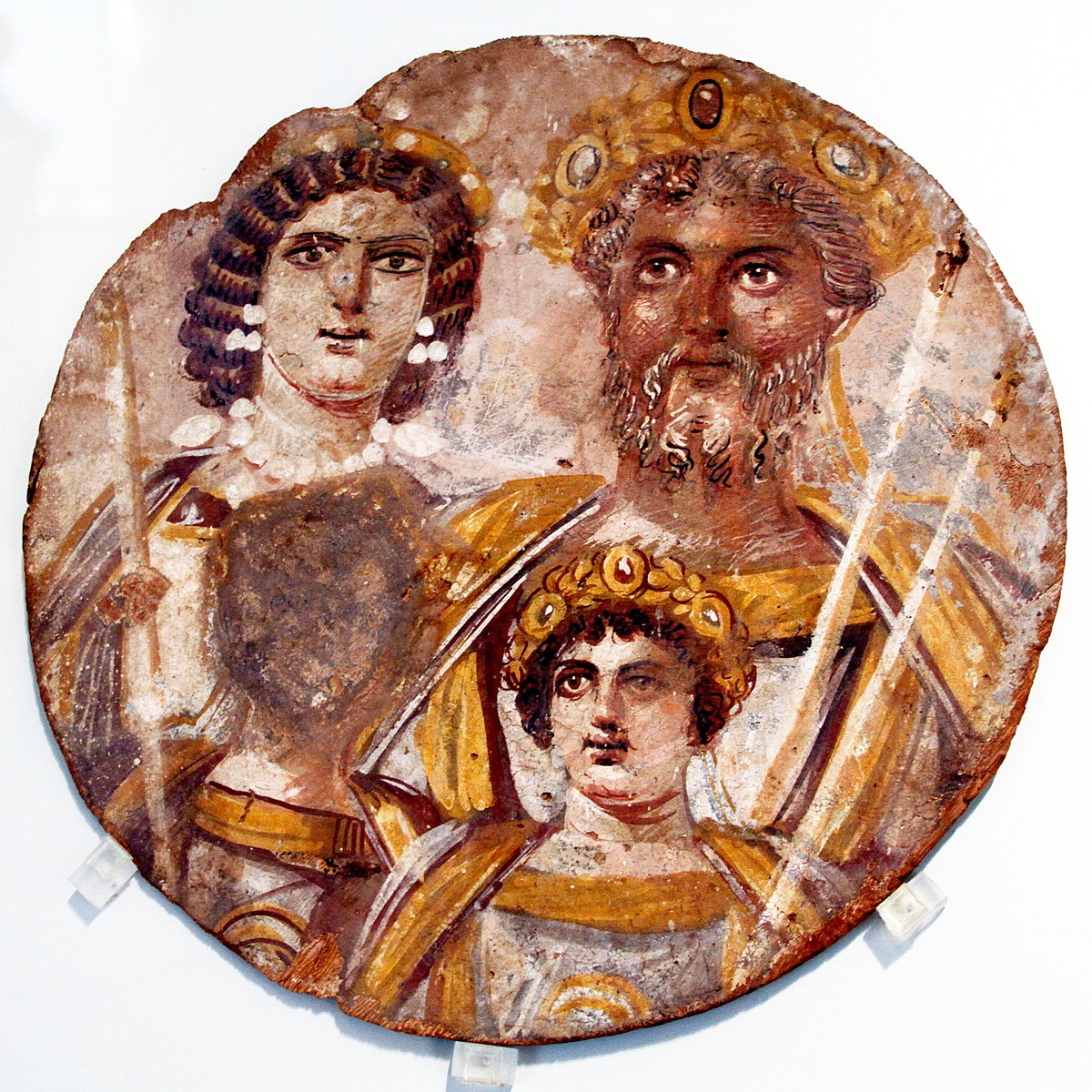The Doctoral School and the Institute of History, Siedlce University of Natural Sciences and Humanities invite you to the International Workshop "The damnatio memoriae in the Severan Dynasty". Program of the Workshop is designed to immerse students and doctorants in ancient worlds and develop their passion and critical abilities in investigating about ancient history.

The workshop will be held on January 20, 2023 at 4 p.m. using the Google Meet platform (https://meet.google.com/uom-rtnh-yeo?hs=224&pli=1),
Workshop programme:
Conducted by Joanna Szklarz (The Doctoral School, Siedlce University)
16.00 - 16.15
Prof. Danuta Okoń
Clarissimus vir and damnatio memoriae in Rome of the Age of the Severans. New findings
[Clarissimus vir a damnatio memoriae w Rzymie epoki Sewerów. Nowe ustalenia]
Abstract:
The Severian era was a troubled period, shaken by civil wars and rebellions therefore the number of condemned senators (not counting counter-candidates to power) reached almost 100. It is widely believed that declaring a senator a public enemy and sentencing him to death was accompanied by a condemnation to oblivion (damnatio memoriae). However, only in the case of 14 senators the damaged inscriptions allow us to assume that they were subjected to this procedure. This procedure was implemented for "bad" emperors or counter-candidates for the purple and was of an all-imperial nature, while senators were generally not covered by it, which means that from the point of view of the apparatus of power they were of little importance.
Streszczenie:
Epoka seweriańska była niespokojnym okresem, wstrząsanym wojnami domowymi i buntami dlatego liczba skazanych senatorów (nie licząc kontrkandydatów do władzy) sięgała niemal 100. Powszechnie uważa się, że uznaniu senatora za wroga publicznego i skazaniu na śmierć towarzyszyło skazanie na niepamięć (damnatio memoriae). Jednak tylko w wypadku 14 senatorów uszkodzone inskrypcje pozwalają zakładać, że zostali oni objęci tą procedurą. Procedura ta była wdrażana w stosunku do „złych” cesarzy lub kontrkandydatów do purpury i miała charakter ogólnoimperialny, natomiast senatorowie z reguły nie byli nią obejmowani, co oznacza, że z punktu widzenia aparatu władzy byli mało istotni.
16.15 - 16.30
Dr. Pedro David Conesa Navarro
Fulvia Plautilla's damnatio memoriae: an Analysis of a General Sanction based on a Few Iconographic Representations
[Damnatio mamoriae Fulvii Plautilli: analiza ogólnych skutków na podstawie wybranych przedstawień ikonograficznych]
Abstract:
Publia Fulvia Plautilla was the wife of the Roman emperor Caracalla. On January 22, 205, her father Gaius Fulvius Plautianus was executed for treachery and his family properties were confiscated. Plautilla was exiled by Caracalla to Sicily and then to Lipari. She was treated very harshly and were eventually strangled, possibly on Caracalla's orders.
Streszczenie:
Publia Fulvia Plautilla była żoną cesarza rzymskiego Karakalli. 22 stycznia 205 roku jej ojciec Gajusz Fulwiusz Plaucjanus został stracony za zdradę, a jego majątek rodzinny skonfiskowano. Plautilla została zesłana przez Karakallę na Sycylię, a następnie do Lipari. Była traktowana bardzo surowo i ostatecznie została uduszona, prawdopodobnie na rozkaz Karakalli.
16.30 - 16.45
Prof. Katarzyna Balbuza
Public image of Julia Domna - testimony of coins. "Immortalizing" of the Imperium Romanum, emperor(empress) or dynasty? A contribution to the imitation of Julia Domna's denarius
[Publiczny wizerunek Julii Domny - świadectwo monet. "Uwiecznianie" Imperium Romanum, cesarza(owej) czy dynastii? Przyczynek do imitacji denara Julii Domny]
Abstract:
Since the time of Augustus, Roman emperors used various media, including largely coinage, to create their own political image. In the context of the ideology of eternity, this was to immortalize power, the state or the emperor himself. Interestingly, these activities are also reflected in coins minted for empresses or other members of the imperial house. One of such more charismatic female personalities of the late 2nd and early 3rd centuries AD was Julia Domna. Was this empress similarly created in the monetary media? And if so, how, to what extent, and was it consistent with the public image of the dynasty? A contribution to the imitation of the denarius of Julia Domna.
Streszczenie:
Od czasów Augusta cesarze rzymscy wykorzystywali różne środki przekazu medialnego, w tym w dużej mierze monety, do kreacji własnego wizerunku politycznego. W kontekście ideologii wieczności było to uwiecznianie władzy, państwa lub samego cesarza. Co interesujące, działania te odzwierciedlają także monety wybijane dla cesarzowych lub innych członkiń domu cesarskiego. Jedną z takich bardziej charyzmatycznych osobowości kobiecych przełomu II i III wieku n.e. była Julia Domna. Czy ta cesarzowa była w podobny sposób kreowana w monetarnych środkach przekazu? A jeśli tak, to w jaki sposób, w jakim zakresie i czy było to zbieżne z publicznym obrazem dynastii? Przyczynek do imitacji denara Julii Domny.
LITERATURE FOR PARTICIPANTS:
Georgiadou, Z., Florou, V., & Ilia - Georgiadou, I. (2020). Damnatio memoriae: contemporary condemnation of memory. Design/Arts/Culture, 1. https://doi.org/10.12681/dac.25913
Balbuza, K. (2019). The Role of Imperial Women in the Monetary Distributions (Liberalitas) in Rome in the Light of Numismatic Sources. Studia Historiae Oeconomicae, 37.1, 5–24. https://doi.org/10.2478/sho-2019-0002
Conesa Navarro, P. D., & Smyk, A. (2022). Goddess Venus on Julia Domna’s coins. The Political Use of the Coinage of an Augusta of the Severan Dynasty. Historia i Świat, 11, 175–200. https://doi.org/10.34739/his.2022.11.11
Okoń, D. (2019). Military Tribunate in the Careers of Roman Senators of the Severan Period. Part I: Introductory Iusses. EOS Commentarii Societatis Philologae Polonorum, 106.1, 59–76. link

Danuta Okoń, Full Professor, a historian of Antiquity, specializing in Latin epigraphy and Roman prosopography. Employed in the Institute of History at the University of Szczecin. She is the author of many scholarly works on the social and political history of Imperium Romanum under the Principate. A member of the Polish Philological Association, Association Internationale d’Épigraphie Grecque et Latine, Athens Institute for Education and Research, Polish Society for Ancient Studies, Committee on Ancient Culture of the Polish Academy of Sciences (PAN), Committee for the Ancient History of the Polish Historical Association.
[Danuta Okoń, profesor zwyczajny, historyk starożytności, specjalizujący się w epigrafii łacińskiej i prozopografii rzymskiej. Zatrudniona w Instytucie Historii Uniwersytetu Szczecińskiego. Autorka wielu prac naukowych z zakresu historii społecznej i politycznej Imperium Romanum w okresie pryncypatu. Członek Polskiego Towarzystwa Filologicznego, Association Internationale d'Épigraphie Grecque et Latine, Athens Institute for Education and Research, Polskiego Towarzystwa Studiów nad Starożytnością, Komitetu Kultury Starożytnej PAN, Komitetu Historii Starożytnej Polskiego Towarzystwa Historycznego.]

Dr. Pedro David Conesa Navarro - Professor at Complutense University in Madrid. He defended his doctoral thesis under joint supervision by the universities of Murcia and Rome – Tor Vergata (in 2020). He did different research stays at Rome (Deutsches Archäologisches Institut Rom), Cambridge (University of Cambridge), and Heidelberg (Universität Heidelberg – Seminar für Alte Geschichte und Epigraphik). His main research topics are: Roman Women, the Severan Dynasty and the Roman Culture. Currently, He is secretary of the Journal Antigüedad y Cristianismo and member of the research centre CEPOAT (Centro del Próximo Oriente y la Antigüedad Tardía) of the University of Murcia.
[Dr Pedro David Conesa Navarro - profesor Uniwersytetu Complutense w Madrycie. Obronił pracę doktorską pod wspólną opieką uniwersytetów w Murcji i Rzymie - Tor Vergata (w 2020 roku). Odbył różne pobyty badawcze w Rzymie (Deutsches Archäologisches Institut Rom), Cambridge (University of Cambridge) i Heidelbergu (Universität Heidelberg - Seminar für Alte Geschichte und Epigraphik). Jego główne tematy badawcze to: Kobiety Rzymskie, Dynastia Sewerów i Kultura Rzymska. Obecnie jest sekretarzem Journal Antigüedad y Cristianismo oraz członkiem centrum badawczego CEPOAT (Centro del Próximo Oriente y la Antigüedad Tardía) Uniwersytetu w Murcji.]

Professor of Adam Mickiewicz University Katarzyna Balbuza, historian of antiquities in the field of the history of the early Roman Empire and Roman numismatics. She is the author of numerous scholarly works, including the books entitled Triumphant. Triumph and the ideology of victory in ancient Rome of the imperial era, Poznań 2005, Aeternitas Augusti. The formation and development of the concept of eternity in the (auto)presentation of the Roman emperor (from Augustus to Severus Alexander), Poznań, 2014. President of the Poznań branch of the Polish Historical Society.
[prof. UAM dr hab. Katarzyna Balbuza, historyk-starożytnik w zakresie historii wczesnego cesarstwa rzymskiego i numizmatyki rzymskiej. Autorka wielu prac naukowych, m.in. książek pt. Triumfator. Triumf i ideologia zwycięstwa w starożytnym Rzymie epoki cesarstwa, Poznań 2005, Aeternitas Augusti. Kształtowanie się i rozwój koncepcji wieczności w (auto)prezentacji cesarza rzymskiego (od Augusta do Sewera Aleksandra), Poznań, 2014. Prezes poznańskiego oddziału Polskiego Towarzystwa Historycznego.]

Joanna Szklarz, a second-year doctoral student in history at the Doctoral School of the Siedlce University of Natural Sciences and Humanities. She holds a master's degree in Polish philology. Based on the poem The Persian Book of King's. Shahnameh by Ferdousi, she is conducting research on the culture of ancient Iran.
[Joanna Szklarz, doktorantka drugiego roku historii w Szkole Doktorskiej Uniwersytetu Przyrodniczo-Humanistycznego w Siedlcach. Magister filologii polskiej. Na podstawie poematu Księga królewska. Szahname autorstwa Ferdousiego prowadzi badania nad kulturą starożytnego Iranu.]

